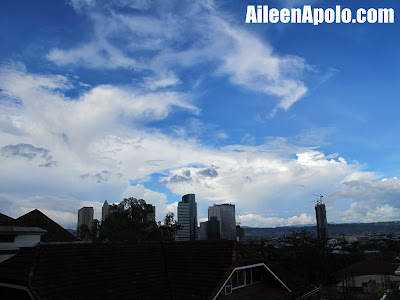Last weekend my family and I attended the Blog & Soul photo workshop for compact/point and shoot camera users at the 8Ten.co Studio. The last time I attended a similar workshop was a few years ago and I thought it would be good to join to brush up on my (non-existent) photography skills.
Back in 2007 I got a Canon G9 because they said that it's almost a DSLR. I thought it would be a good camera before I actually buy a DSLR. I told myself that I would use it for at least 2 years before I get a DSLR. When the camera conked out for the second time I decided not to get a DSLR because I thought I hadn't maximized my G9's capability. My friends were trying to convince me to get a Lumix or a Canon S95, but I was pretty comfortable already with the G series so I got a Canon G12. The Canon G12 definitely has a lot more buttons and features than the G12 so I would really have to push myself to learn all of it.
I honestly never really grasped the difference between shutter speed, aperture, ISO etc. I've been trying to understand it better by reading online tutorials, but it was Winston who kinda managed to make me understand the different through a faucet-water-glass analogy. Winston, Juned and Markku have been teaching me how to use my camera better and I now have better understanding of what P, M, Tv, Av on my camera means. Miguel has been key at teaching me how to tweak color settings etc.
Anyway, I digress... here are some key learnings from the workshop:
1. Read your camera's manual! I don't read manuals so I usually ask Sweetie to read it for me hehehe. So, if you don't like reading your manuals you should explore your camera! Juned explained more about shutter speed to me when we stopped over this bridge at MOA.
Bridgeway at SM Mall of Asia.
2. Experiment! The only way to learn about your camera's features and to learn the right mix of elements is to experiment. Modern day company cameras have a lot of features. I have not explored taking B/W photos yet. Juned's really got at this and I guess I'll bug him for more advise.
Juned, Markku, Winston and Hana.
3. Rule of thirds, this is a classic rule and your camera usually has built in guides to help you frame your photo.
View from 8ten.co Studio's garden (one of many).
4. Observe your subject so you know when to take the shot. Back when photographers were using film they didn't have the luxury of taking many different photos, they had to be precise. Sha (below) is a fun subject since she smiles a lot. What I need to improve on this photo though is its settings so my photos don't come out blurry.
Sha.
5. Lines can help tell a story. I thought the grass edge and gutter kinda pointed to the person like an arrow. Need to improve on lighting though.
He inspired me to vlog again! Hope I'll have time :)
6. Action shots. It is important to know your camera's quirks so you can click on the button at the right time when taking action shots (i.e. jump shots). My photo though is a bit blurry accckk.
Fitz on air!
7. Macro photography is hard! Well for inanimate objects it would probably be easy, but taking photos of the baby grass hopper was quite hard. I would've loved to capture clearly the ridges on his back. On the opposite side of things, when taking photos during concerts and let's say you are seated on the bleachers, take photos in a larger format (or raw) so you can just crop it.
The baby grasshopper Miguel picked up.
8. Perspective, try taking photos from another perspective. This is another creative way to take photos. It was Sweetie who actually got me to take this photo.
Well, I still have a long way to go and as the mentors said during the workshop, "It's not the camera, it's the photographer!"
Thanks Blog & Soul for organizing this workshop. And for 8Ten.co for the hosting us and for the yummy lumpia and pancit bihon! (Ano pala yung ketchup ninyo, masarap eh hehehe).













